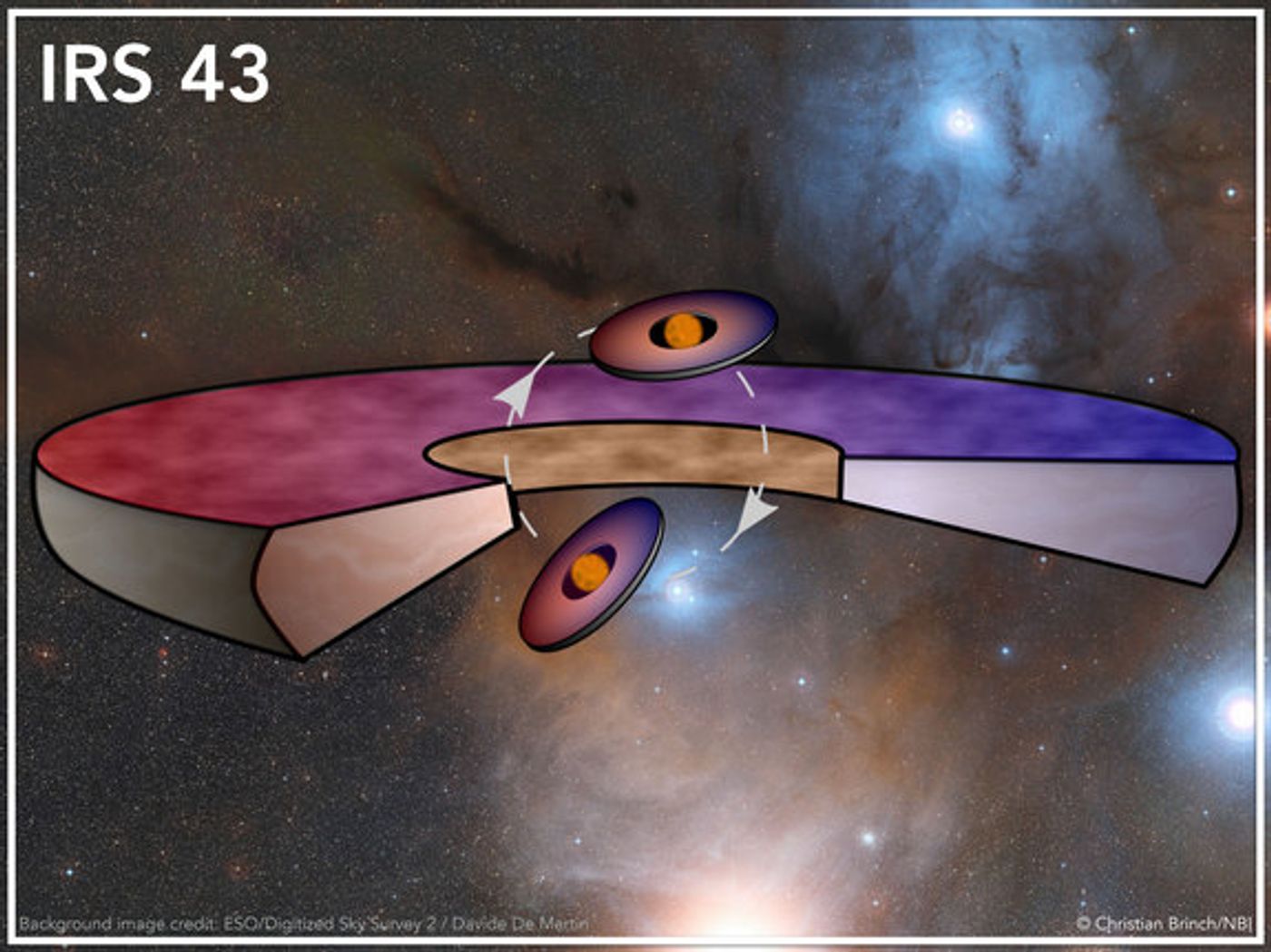This Binary Star System Has 3 Misaligned Planet-Forming Disks
While observing a distant binary star system known as IRS 43 with the Atacama Large Millimeter Array (ALMA) in northern Chile, astronomers have determined something very odd that we’ve never seen before.

Image Credit: Christian Brinch/NBI
Typically, when looking at a star system, or even a binary star system, there is a single accretion disk orbiting the star(s). The accretion disk is the range where planets may form from dust and debris clumping together. Even our own Solar System follows this model.
On the other hand, IRS 43 exhibits up to three separate accretion disks. Two of those orbit each of the stars in the binary system, and the last one is much larger and orbits the two stars simultaneously.
More strangely, all three of these accretion disks were formed on different planes from one another. No scientist seems to really understand why or how this may have occurred, but the findings appear in The Astrophysical Journal Letters.
"The two newly formed stars are both the size of our sun and they each have a rotating disc of gas and dust similar to the size of our solar system. In addition, they have a shared disc that is much larger and crosses over the other two discs. All three discs are staggered and this breaks with everything we have seen so far," Christian Brinch, an assistant professor with the University of Copenhagen, said.

Image Credit: Christian Brinch, NBI, KU
The stars are very young, at just about 100-200,000 years old and are about the same size as our Sun. Although this is a long period of time compared to a human’s life span, this is just the blink of an eye in universe time.
One of the theories set forth is how this may occur early on in the development of the binary star system, but later on corrects itself as things become less chaotic. Such a hypothesis might be a viable reason why most systems have accretion disks on the same plane.
The astronomers are hoping to answer some questions about how this could have happened with the help of computer models. The goal will be to try and reconstruct the circumstances where this kind of thing may have happened and then better understand why it’s not so common.
Source: Space.com








